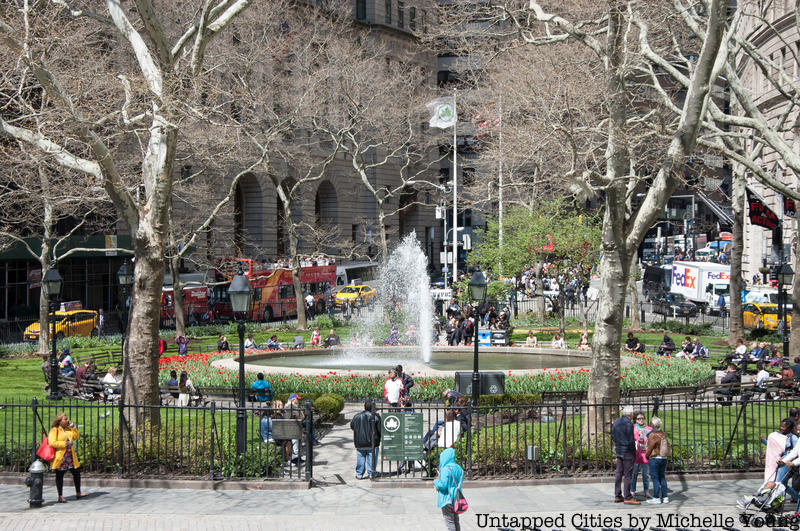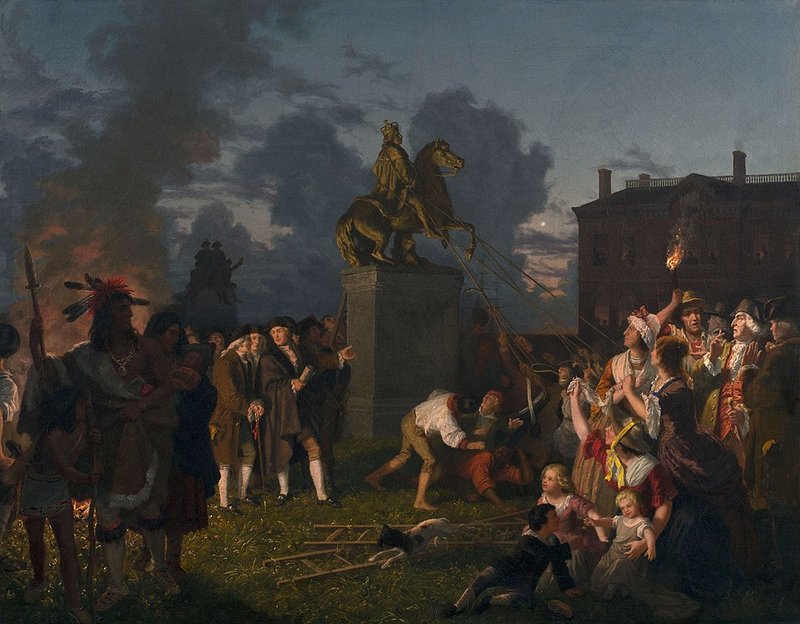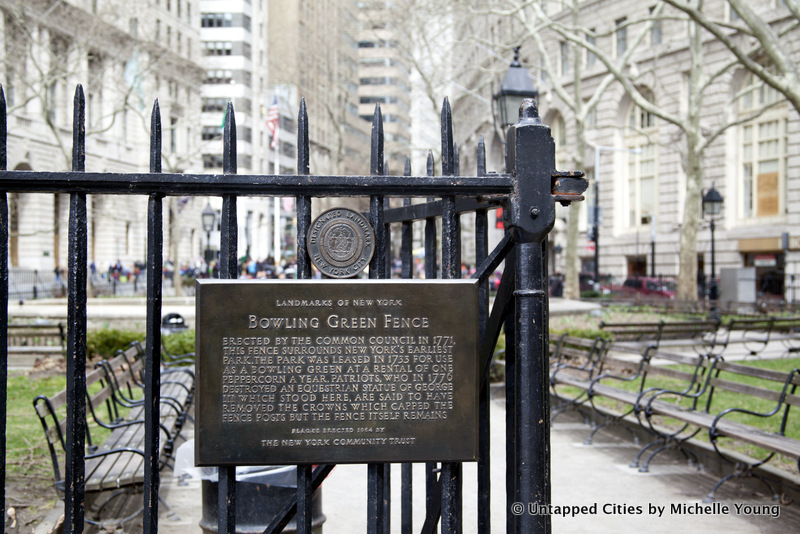
Few things left in New York City date back to its earliest history as the first New Amsterdam settlement. Broadway is one of them, a street that most associate with running through the whole of Manhattan, but actually runs eighteen miles up through the Bronx and ends just north of Sleepy Hollow. At its other end is South Ferry, the southernmost geographical point of Manhattan that is used now as the embarkment point for ferries to Staten Island. The area around South Ferry is one of the earliest known settlement points for the Dutch explorers that first landed there. What’s more, it is the site of the oldest public park in the entire city, a former cattle market and parade ground known as Bowling Green, which has seen its fair share of events over New York’s nearly 400 year history.
Bowling Green was a colonial center of activity. Back when the area was New Amsterdam, farmers and businessmen used it as a grounds to sell and buy cattle for their farms, starting around 1630. In 1677, the city’s first public well was dug on its grounds in front of Fort Amsterdam. It served as an informally-known communal ground until the 1740s, when the area’s governing body known as the Common Council sold part of the land to three landlords with the promise that it would become a park complete with a bowling green for recreation and paths for walking.
 Tearing down the sculpture of King George in Bowling Green. Painting by Johannes Adam Simon Oertel. Image from Wikimedia Commons.
Tearing down the sculpture of King George in Bowling Green. Painting by Johannes Adam Simon Oertel. Image from Wikimedia Commons.
Bowling Green Park, as it came to be known, saw an important day in American history when in 1770, British forces installed a 4,000 lb statue of King George III in the park, in celebration of the British victory in the Seven Years War. When the Declaration of Independence was signed amid growing unrest between the colonies 6 years later and read aloud on the steps of where New York’s City Hall stands now, several members of the Sons of Liberty rushed down to Bowling Green and pulled the gold-plated lead statue to the ground. Around this time, zealous revolutionaries also sawed the crown-shaped finials from the tops of Bowling Green’s fence in a further act of defiance. The fence, now recognized as the oldest fence in the city, still retains these saw marks.

The legend goes that King George III’s statue was melted down into approximately 42,000 lead bullets while the head was paraded around town. Several fragments of the statue remain, separated amongst the New York Historical Society and the Museum of the City of New York. The statue’s stone pedestal was similarly repurposed, used as one of the steps for a local mansion.
Over the next few decades, several important figures settled in townhouses and mansions around Bowling Green, including Governor John Jay, Chancellor Robert Livingston, Steven Whitney, and even George Washington himself for several months in 1790 before the United States Capital moved to Washington D.C.
In the years to come, Bowling Green saw a number of important companies take up residence in the buildings and skyscrapers that now surround it, including the transatlantic shipping company Cunard, the Beaux-arts and Art Deco architecture firm of Emery Roth, and the Standard Oil Company. Today, most tourists visit Bowling Green for the ‘Charging Bull,’ also called The Wall Street Bull, installed there in 1989. Thousands today probably pass the sawn-off fence posts dating to pre-Revolution or the site of Washington’s residence in the Alexander Macomb House, now demolished, without noticing them.
So next time you trek down there to take a selfie with the bull, stop for just a moment and look around. 400 years of American history is there, if you know where to find it.
Next, read about the Queens Giant, the 450-year old tree that predates New York itself. Get in touch with the author @jinwoochong.






